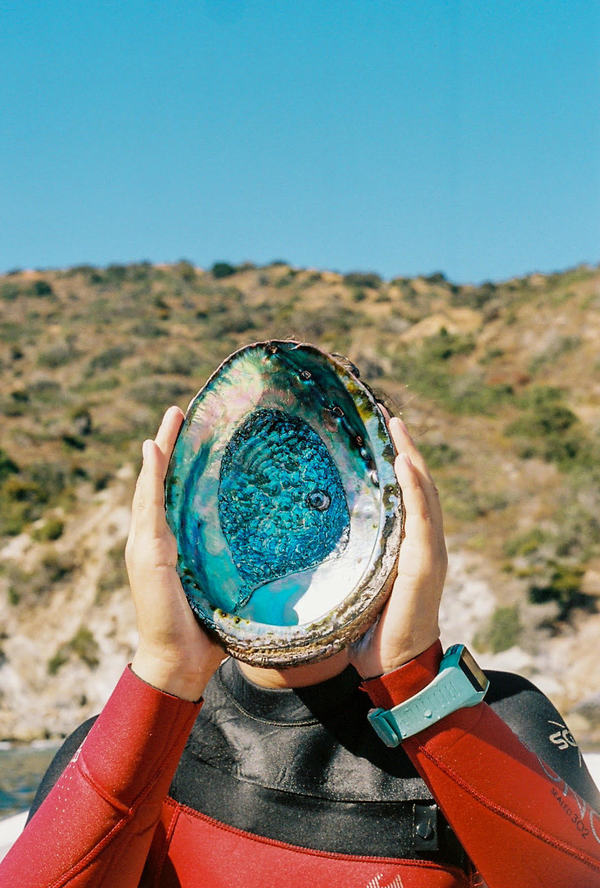Read Time 8 minutes
Inside the Life of a Wilderness Photographer
In a recent conversation with photographer Alex Krowiak, we were drawn in by his calm focus and deep commitment to the landscapes he documents. His work explores remote and fragile environments with a focus on change, memory, and the traces we leave behind. What stood out was not just the photography, but the thoughtful way he spoke about the ethics of tourism, the weight of history, and the tools we use to tell these stories.
What draws a photographer to the edges of the map? How does witnessing environmental change shape their approach to image-making? And what role does technology play in capturing the urgency—and beauty—of the natural world?

Why the Wild Matters
What inspired you to focus on documenting remote locations?
I think it comes down to a fascination with the in-between places, the edges of maps, and what they reveal about us and our relationship with the land. Growing up in a rust belt town in the aftermath of the folded coal industry, nature offered me a means away from what I saw as a disconnect from ecology. Photography became a way to get myself into those places and then a tool to hold onto those moments.
Then I learned from a lot of my photographic influences and how they approached similar settings. Alec Soth’s ability to weave human narratives into vast spaces has always stuck with me. Richard Misrach’s work, especially Desert Cantos, changed the way I see the American landscape—not just as a place, but as a record of history and conflict. And then there’s someone like Stephen Shore, who captures the landscape in a way that feels almost sculptural, where the landscape is a living character itself.
Remote locations became the most exciting subjects for me because they hold so much history but also feel like blank slates—places where identity, memory, and myth collide. Whether I’m shooting in the deserts of Baja California or the coral reefs of the South Pacific, I’m always looking for that tension and those lessons that only exist at the edges of our everyday world.


Witnessing Change
Have you revisited any locations and noticed significant changes over time?
One of the best parts of the jobs I have worked is the opportunity they afford to visit destinations repeatedly. From living on an island for three years to working in Southeast Alaska every summer for six, I’ve had the chance to see not only how seasonality affects a place over the course of a year but also how things have changed over the course of several years.
I’ve only been working in the field for 10 years, but I am lucky to work alongside naturalists and photographers who have been guiding to these places much longer. Combining their stories of what these places used to be like with my first-hand experience now really shows just how much has changed, and in many cases, how much has been lost.

The Tourism Dilemma
Do you ever feel conflicted about tourism’s role in both preserving and harming the places you photograph?
Constantly. It’s a never-ending internal debate and calculation – thinking about all it takes to get an entire group of travellers to somewhere like a remote Pacific Island or Antarctica. What’s the carbon footprint of each trip, and does it outweigh the benefits of sharing these places with people? There is no way to definitively calculate it, and even if there were, I’m sure the answer would be hard to wrestle with. But people are not going to stop travelling, so why not make it impactful and use it as an opportunity to investigate questions that people might continue to talk about when they return home?
Baba Dioum, a Senegalese forestry engineer, has a saying (admittedly bordering on trite by now), “In the end, we will conserve only what we love, we will love only what we understand, and we will understand only what we are taught.” If we’re going to protect these places, I think we have a much better shot by showing people firsthand just how awe-inspiring and just how at risk they are.



Journeys That Stay With You
Is there a particular journey or project that has deeply impacted you?
The early expeditions in various destinations where I work have always been hugely inspirational. John Steinbeck in Baja California, John Muir in Southeast Alaska, and Frank Hurley in Antarctica. Outside of simply seeing how these explorers operated outside of algorithms, their writings provide a baseline for what these places once were. They offer up a window into change that could only have been captured by writing and help inform a different way of seeing them today.
There is one fjord that we would often sail into in Alaska that ends at the face of the glacier that carved the fjord over the course of thousands of years. In John Muir’s book Travels in Alaska, he writes about a small island in the middle of the fjord and how the face of the glacier met it at the time of his trip. Today, we sail past it and continue on six more miles until we reach the glacier. That is a powerful perspective change that can only be experienced with the help of his writing.



Old Tools vs. New Tricks
Has new technology changed how you document landscapes?
You know, I’ve had enough beautiful, silent moments in nature that have been abruptly interrupted by the whir of a drone to make me kind of a technophobe when it comes to photography. For the work I like to make, I also tend to think that simplicity yields my favourite photos. The limitations of a film camera or a minimal kit often force you to think outside the box in a way that I personally appreciate.


Embracing the Wild
What are the biggest challenges of shooting in remote or extreme locations, and how do you prepare for the unpredictability of nature in your travels?
There are the obvious logistical challenges: you’re carrying everything on your back or in a small boat. Every piece of gear is a trade-off — weight versus necessity, redundancy versus mobility. If something breaks, there’s no camera shop around the corner. You either fix it with whatever’s in your kit, or you live without it.
But the real challenge is patience and knowing when to put your camera down. These places don’t hand you images. You put yourself in the right place and hope the light, the wildlife, the elements, all align for a split second. Sometimes they do, and you are given a photo to capture. Most of the time, though, something is off, and you are not able to create what you’re picturing in your head. In those instances, you have to recognise it, put your camera down, and just appreciate what’s in front of you. Knowing when to do that has been the hardest thing to learn, but once you do, it really changes how you interact with the landscape.
You don’t prepare for unpredictability so much as you learn to move with it. You can study the maps and charts as much as you want. You can check the forecasts and read the field reports from people who have been there before. But at some point, you step off the boat, and everything changes. In Antarctica, there have been days that have started with blue sky and sunny weather, and within minutes, it has become 50-knot winds and storms. None of your planning matters, and you just have to go with whatever you’re given. The best way to prepare is to accept that plans will change and go in with an open mind.

Alex’s Work
subscribe for the latest artist interviews,
historical heronies, or images that made me.
what are you in the mood for?











